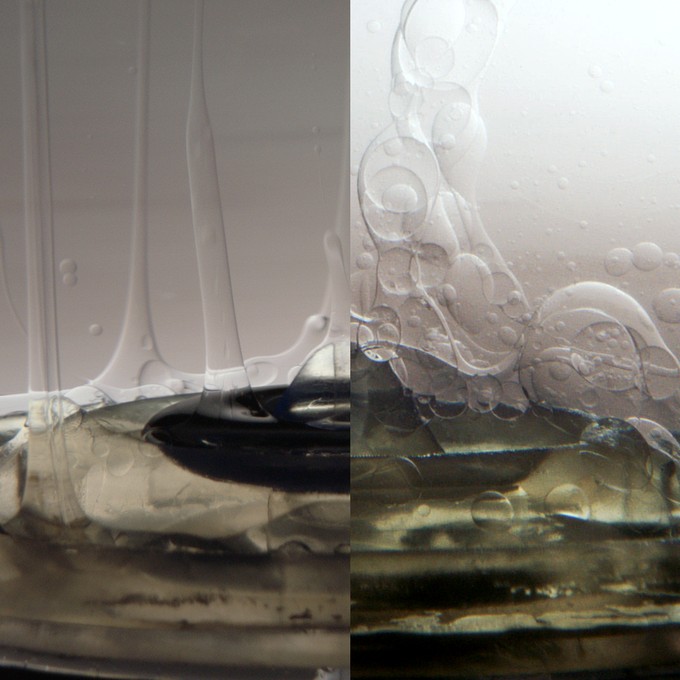Rolando Cruz Marquez
Am I too viscous ? - Installation - 2022
presented as part of the exhibition Panorama 24



Fluid bodies do not sustain the shear forces of movement. In other terms, the study of fluid dynamics is the study of movement when every movement is allowed.
∂u/∂t + (u∙∇)u = (-1)/ρ ∇P + ν∇² u + f
The Navier-Stokes equation above is a fundamental model stating that the velocity field (fluid motion), is the result of the equilibrium between three actions:
(-1)/ρ ∇P is the gradient of pressure: the perceived difference between where the fluid is, and the array of possibilities. Fluid motion tends towards a place of lower pressure, if this place exists. is the fluid language: pressure waves propagate from one particle to the next. Compression omens an upstream obstacle, and expansion informs that a crisis has passed.
+ ν∇² u is the body's viscosity, its resistance to change. Viscous bodies move with effort as their elements try to keep cohesion. Non-viscous bodies are incoherent and overly-excited with any energy input.
+ f is an external force, like gravity, which acts evenly on every fluid body but with different results, depending on their nature.
Like every other body of water, I too change with shear. I too wish to move towards lower pressure, more comfortable situations. Adverse gradients can decelerate me, detach me from my path, triggering instabilities and turbulence. I react differently to external forces that apply evenly on my peers: it doesn't take much for us to be influenced into opposite paths. My viscosity does keep my internal cohesion, but stops me from necessary change.
Rolando Cruz Marquez
Costa Rican, laureate of an AEFE Excellence-Major scholarship, Rolando Cruz Marquez is a PhD student in aerodynamics at ONERA Lille. His scientific research focuses on dynamics and control of aircraft-generated wake vortices. In his artistic work fluid mechanics are a tool to study the interaction between our sensibility and the external world.
